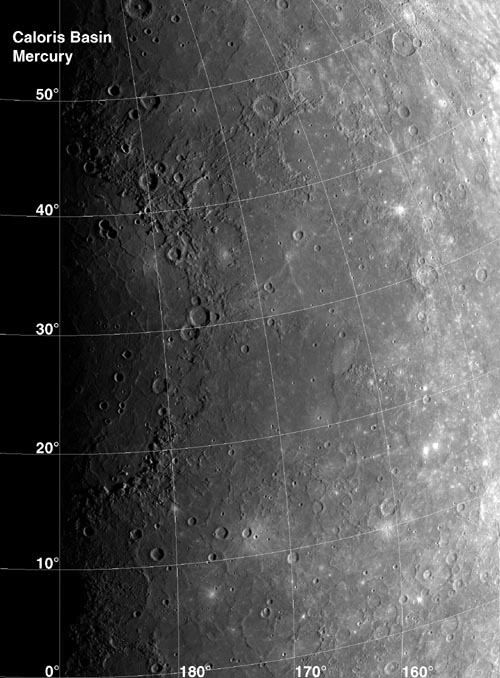
|
The surface composition of Mercury is yet unknown. One objective of the probes BepiColombo (ESA) and Messenger (NASA) is to collect information on the composition of Mercury's surface, an information that will allow us to learn much about the formation of Mercury and of the solar system. Mercury's surface is covered with craters ; it is very similar in appearance to the Moon. Most bombings have taken place more than 3500 million years ago, mainly at the beginning of the formation of the solar system (4.6 billion years ago) and during the period of the "Late Heavy Bombardment" (3.8 billion years ago). According to the scenario accepted by most scientists, Mercury received then more impact than the other planets because of its proximity to the Sun, very massive and attractive. The bodies had a particularly high speed when hitting Mercury, which had in addition almost no atmosphere to slow them down.
|
|
Caloris Basin
(credit: JPL/NASA) |
|
The most remarkable crater known is the Caloris Basin, a meteorite impact with a diameter of about 1300 km. The plains between the craters are caused by volcanic eruptions forming areas of lava. The presence of present volcanic activity on Mercury remains an open question. One of the objectives of BepiColombo and Messenger probes is to collect information on the composition of Mercury's surface. This information is essential to determine how our solar system was formed. |